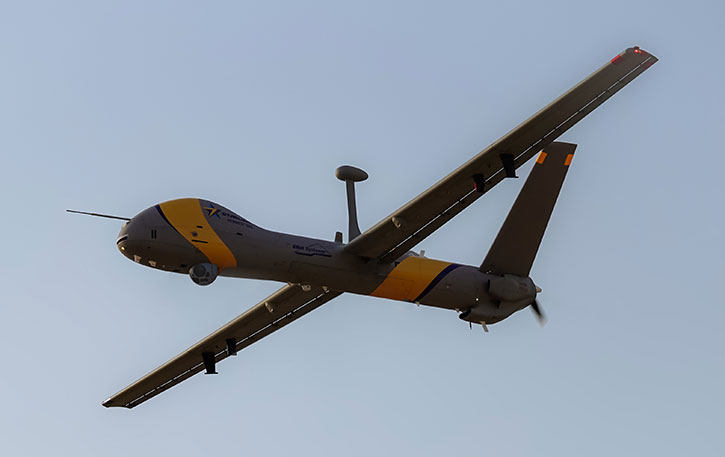Elbit Systems introduced today the Hermes 900 StarLiner – the largest and heaviest version of Hermes 900 family, designed to be fully compliant with NATO STANAG 4671, enabling the ‘StarLiner’ to be safely integrated into civilian airspace and fly in the same environment with manned aircraft. The 1.6-ton StarLiner recently completed a year-long flying schedule, performing Civil Aviation Authority certified flights in Masada National Park, Israel. Elbit Systems expects to receive approval from the European Aviation Safety Agency (EASA) for its own product in the coming months.
These aircraft will be supplied to the Swiss Armed Forces Switzerland to fly in the Swiss National Airspace beginning in 2019.
As part of the qualification process the StarLiner assumed new avionics including cooperative and non-cooperative Detect & Avoid Systems, Terrain Avoidance Warning, Automatic Take-off and Landing capability in near zero visibility, redundant broadband line-of-sight (LOS) and beyond line-of-sight (BLOS) data links and adverse weather capabilities that includes de-icing and direct lightning strike sustainment.
These technological enhancements allow the aircraft to perform safely in visual flight rule (VRR) and instrument meteorological conditions, the drone uses a more powerful heavy fuel engine provides improved climb rate, extended endurance and a higher ceiling and maximum speed.

Until now drones are operated over remote areas, flying in excluded airspace where civilian traffic is restricted due to the risks posed by the warfighting sides. But these drones are excluded from flying back at their home countries and are restricted to operate in specific zones where other aircraft are not allowed to enter. This segregation limits their operation and affects the quality of training and services troops could accept.
One of the reasons for this segregation is the fact that drones were not certified by civil aviation boards, the governing authority regulating air traffic and safety standards. Since drones were developed as experimental platforms and later adapted to military uses, they lack the very basic standards meeting the civilian certification process. While this has nothing to do with the drone’s flight safety, until now, lack of standards compatibility precluded the consideration of certification of drones. Attempts to approach the problem using platforms based on general aviation aircraft and gliders have no solved the problem.
Until now such operations were pursued under special authorizations enabling drones to operate with civilian traffic in certain routes, where the RPAS can operate from airports but when flying, their routes are separated from civilian traffic, (otherwise, manned aircraft are allowed to keep a certain distance from other aircraft).




















